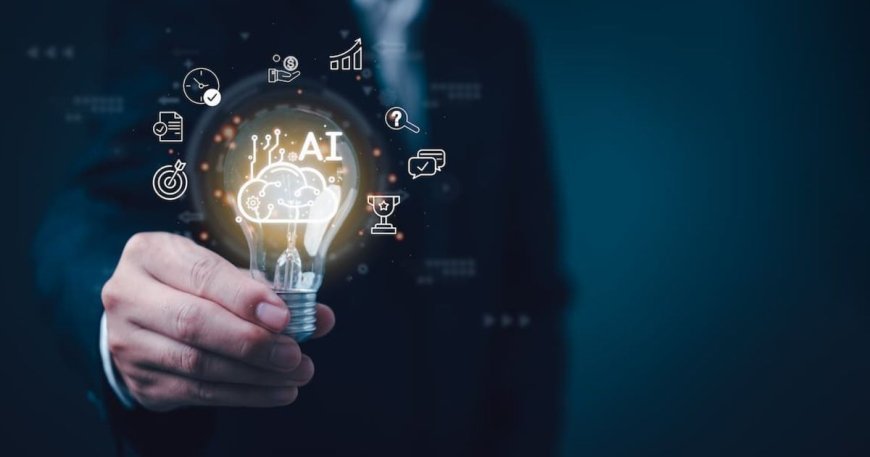10 Groundbreaking AI Innovations You Need to Watch
Discover the top 10 AI innovations reshaping industries, revolutionizing daily life, and driving the future of intelligent technology.
Artificial Intelligence (AI) is rapidly evolving, transforming how we work, live, and solve global challenges. From healthcare and robotics to creative arts and autonomous systems, AI is pushing boundaries in ways once thought impossible. In this article, we explore 10 of the most groundbreaking AI innovations that are setting the stage for a smarter, more efficient, and more connected world.
1. Generative AI for Content Creation
Generative AI, powered by deep learning models like GPT and DALL·E, has changed the creative landscape. These tools can now produce human-like text, realistic images, video content, and even music. Businesses are leveraging generative AI to automate marketing copy, design logos, generate product descriptions, and more. What used to take days can now be accomplished in minutes, without compromising quality.
Key benefits of generative AI:
· Automates creative tasks with impressive speed and accuracy
· Reduces costs for content production
· Enables rapid prototyping in design and storytelling
· Enhances personalization in marketing campaigns
2. AI-Powered Drug Discovery
The pharmaceutical industry is undergoing a revolution with AI-driven drug discovery platforms. These systems analyze massive biological datasets, predict molecular behavior, and simulate drug interactions—cutting down the discovery timeline from years to months. Companies like Insilico Medicine and Atomwise are pioneering this shift, helping bring novel treatments to market faster and more cost-effectively.
Advantages of AI in drug discovery:
· Identifies promising compounds with high precision
· Reduces development costs and failure rates
· Accelerates clinical trial designs
· Enhances personalized medicine approaches
3. Autonomous Vehicles
Self-driving technology is no longer just a futuristic dream. AI now powers autonomous vehicles, enabling them to perceive their environment, make decisions, and navigate safely. Companies like Tesla, Waymo, and Cruise are developing AI-powered navigation systems that rely on computer vision, LiDAR, and real-time data processing.
Core components of AI in autonomous driving:
· Object detection and tracking via computer vision
· Real-time decision-making algorithms
· Route optimization using machine learning
· Continuous learning from road data
4. AI in Cybersecurity
With cyber threats becoming more sophisticated, traditional defenses are no longer enough. AI is being integrated into cybersecurity platforms to detect anomalies, identify threats, and respond faster than human analysts. AI tools such as Darktrace and CrowdStrike use behavior-based models to prevent attacks before they cause harm.
How AI enhances cybersecurity:
· Detects zero-day exploits and new threats
· Automates threat detection and response
· Analyzes vast datasets for unusual activity
· Provides adaptive defense systems
5. AI for Climate Change and Sustainability
AI is now playing a crucial role in environmental conservation and climate change mitigation. From optimizing energy consumption to monitoring deforestation through satellite imagery, AI is being used to tackle some of the planet’s biggest issues. Projects like Google’s DeepMind have even optimized energy use in data centers, reducing emissions significantly.
Sustainable applications of AI:
· Predictive modeling for weather and climate patterns
· Smart grid optimization for renewable energy
· Automated environmental monitoring via drones and sensors
· Resource allocation for disaster response
6. Robotics and AI Integration
AI is making robots smarter and more adaptive. Today’s robots can learn from their environment, collaborate with humans, and perform complex tasks with minimal supervision. From surgical robots to warehouse automation, AI-integrated robotics is reshaping logistics, healthcare, manufacturing, and more.
AI-driven capabilities in robotics:
· Object recognition and manipulation
· Natural language interaction
· Path planning and navigation
· Real-time decision-making in dynamic environments
7. AI in Personalized Education
Education is becoming more tailored thanks to AI. Intelligent tutoring systems and adaptive learning platforms can analyze a student’s performance in real time and customize lesson plans to fit their unique needs. Platforms like Squirrel AI and Carnegie Learning are offering personalized learning experiences that improve student outcomes.
Features of AI in education:
· Real-time performance tracking
· Customized curriculum generation
· Natural language feedback systems
· Scalability across classrooms and regions
8. Natural Language Processing (NLP)
Natural Language Processing has come a long way, enabling machines to understand, interpret, and even generate human language. Applications like chatbots, voice assistants, and translation services have transformed customer support and accessibility. NLP also plays a vital role in data mining, legal analysis, and sentiment analysis.
Real-world uses of NLP:
· Chatbots for customer service and HR support
· AI-powered legal contract analysis
· Multilingual voice translation tools
· Automated content summarization and sentiment tracking
9. AI in Agriculture
Precision agriculture, powered by AI, is improving crop yields, reducing waste, and optimizing resource usage. By analyzing soil data, weather forecasts, and crop health imagery, AI helps farmers make informed decisions. Companies like Blue River Technology and John Deere are integrating AI into farming equipment and platforms.
AI innovations in agriculture:
· Crop monitoring via drone imagery and AI analysis
· Predictive analytics for yield optimization
· Automated pest detection and response
· Smart irrigation systems based on environmental data
10. Emotion AI and Human-AI Interaction
Emotion AI, also known as affective computing, is enabling machines to recognize and respond to human emotions. By analyzing facial expressions, tone of voice, and body language, these systems can enhance customer service, mental health care, and even entertainment. Companies like Affectiva and Realeyes are leading the way in emotional recognition technology.
Use cases for Emotion AI:
· Improved customer engagement in support systems
· Real-time emotional feedback in education and therapy
· Sentiment analysis in media and advertising
· Interactive gaming experiences based on user mood
Conclusion
Artificial Intelligence continues to break boundaries, finding its way into virtually every industry and redefining what technology can achieve. These 10 innovations highlight how AI is not only automating processes but also amplifying human potential, creating new opportunities for growth, sustainability, and well-being. As AI evolves, staying informed about these trends and technologies is vital for businesses, governments, and individuals who want to thrive in an intelligent world.
What's Your Reaction?








